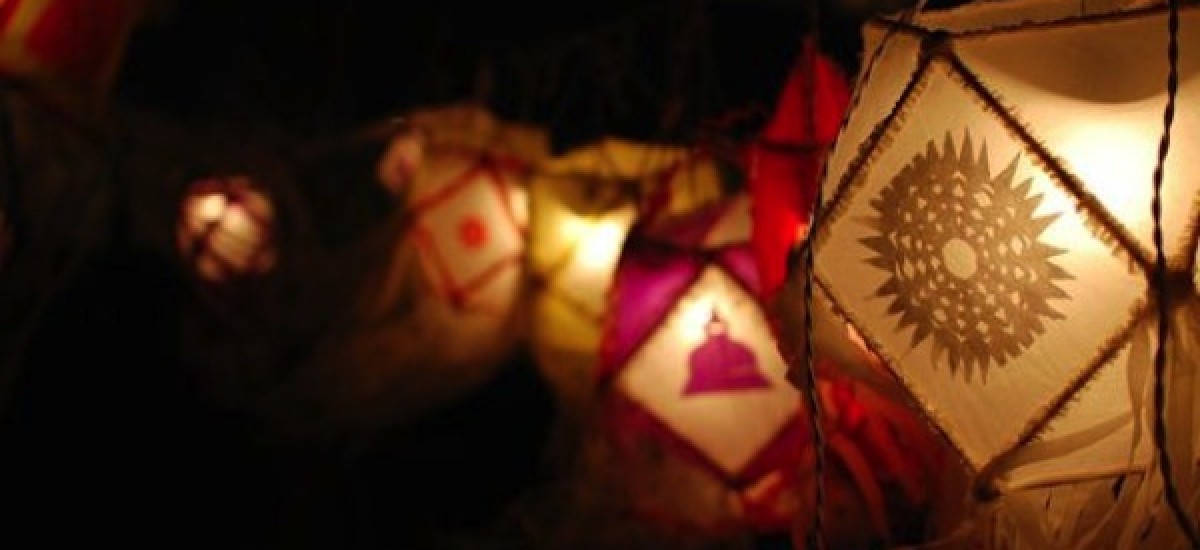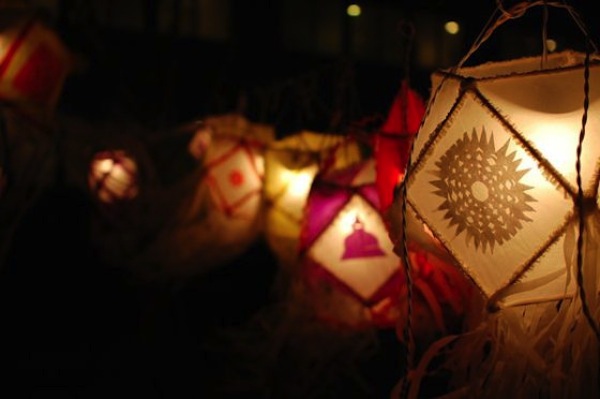Lord Buddha gave different meditation objects to different people. For some, just focusing on rubbing two pieces of material against each other worked, and for some others focusing on the breath worked. On Vesak poya day, we celebrate the birth, enlightenment, and the passing away of this great teacher. In Sri Lanka, almost every Buddhist family makes a lantern, or at least buys and lights up a lantern, or an oil lamp. One might think that this is a mundane way to celebrate Vesak. However, if we carefully use the activity of making a lantern, or the object of a lit up lantern, we can at least get a glimpse of what Buddhist meditation is all about.
In Buddhist teaching, the objective is to attain a permanent state of unconditioned still happiness. To get there, we should understand what conditioned happiness is, and why it is so volatile, mixed with sorrow. We condition our happiness by anchoring on five classes of volatile phenomena – rupa (form), vedhana (feelings), sangya (perception, or classifications of feelings), sankara (bodily, verbal, and mental structures formed by interactions), vingyana (the discriminative awareness that separates this from that) – known as five skandas. When we anchor our happiness on these transient phenomena, the happiness itself becomes transient. To attain unconditioned happiness, one has to anchor the happiness on a more solid bedrock – the transient nature itself – by meditating on the nature of these phenomena.
Vesak lanterns and oil lamps are ideal objects to reflect upon the nature of rupa at the very least. There are four transient qualities to rupa – the nature of toughness (patavi), the nature of vibration (vayo), the nature of wobbliness and flowing (apo), the nature of digestion and dissipation of energy (thejo). When one makes a lantern, one tries to make some rigid structure (patavi, sankara) out of sticks (patavi) and strings (apo), and one may even experience the nature of vibration (vayo) in the seemingly hard sticks. While shaping the sticks, or while tightening the strings, one may get a chance to experience heat due to friction of objects (thejo), or that in one’s own muscles due to combustion of matter (thejo). One may notice that all these phenomena just rise and pass away without having any credibility to anchor one’s long-term happiness or expectations. The same can be seen in oil lamps.
By looking at the finished lantern and its outer appearance, the one who made it gets a chance to penetrate through to the original material and effort that went into it to evaluate how dependable this finished structure is, and the solidity of the new name – the lantern – given to a structure (sankara), which is merely a conditioned phenomenon. One might even see the same in the dancing flame of an oil lamp. In fact if one lights up many oil lamps, one maybe surprised to notice how differently each flame flickers even in seemingly still air. Right there, one gets to see how dependable the above transient qualities of rupa are. A deeper reflection may help to see the transient nature of the rest of the five skandas.
In Maha-parinibbana sutta, Lord Buddha’s last word was – “all conditioned things are transient. Therefore, Bhikkus, strive without delay”. Therefore, let us use anything we find in the traditional objects and celebrations of Vesak to reflect upon these words, to make the observations meaningful. But Vesak or Buddhism is not about caning or forcing people to observing it in some preferential way. Whatever you do in a self driven way to notice the nature of the five skandas is a true celebration of Vesak.


